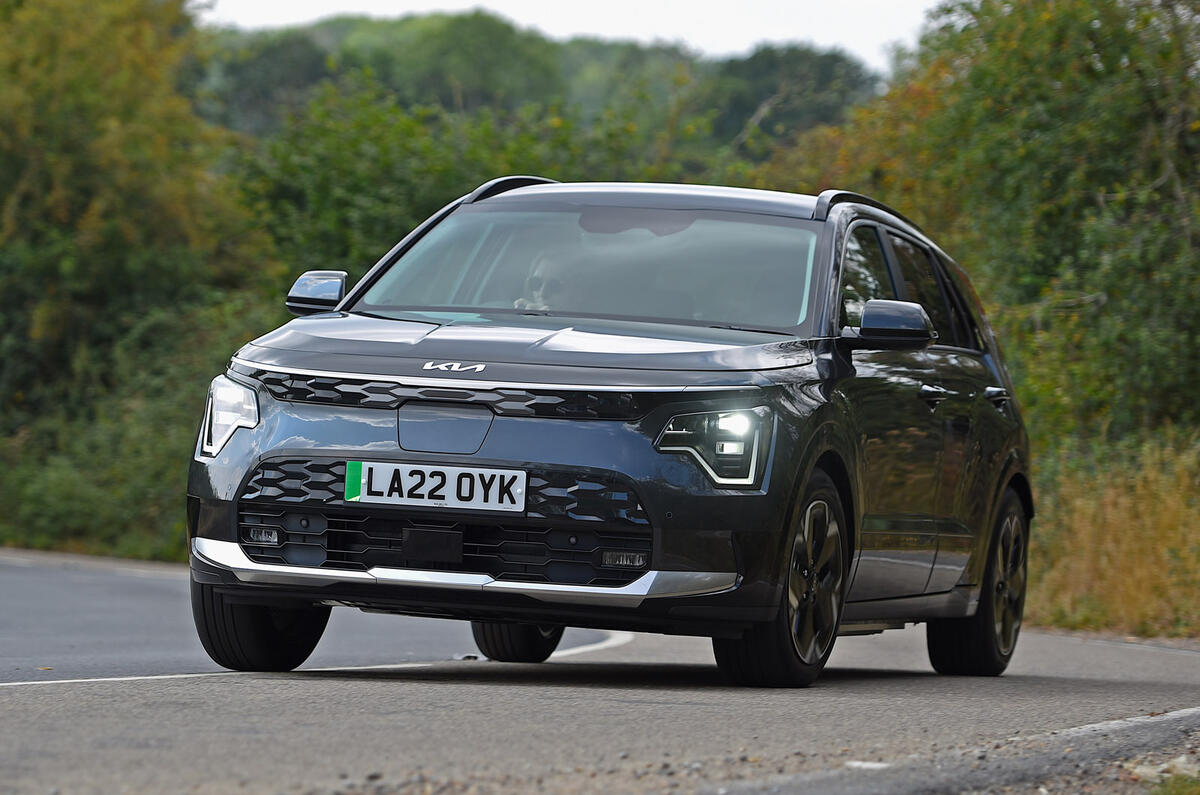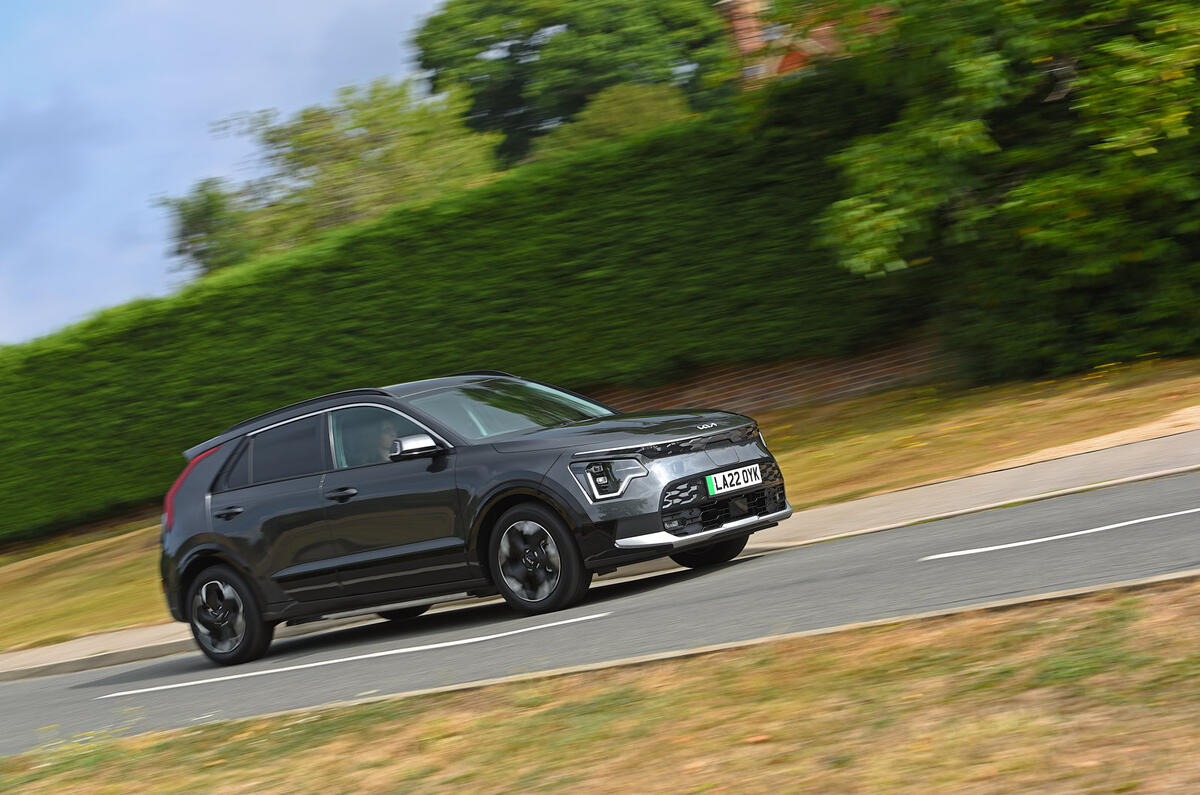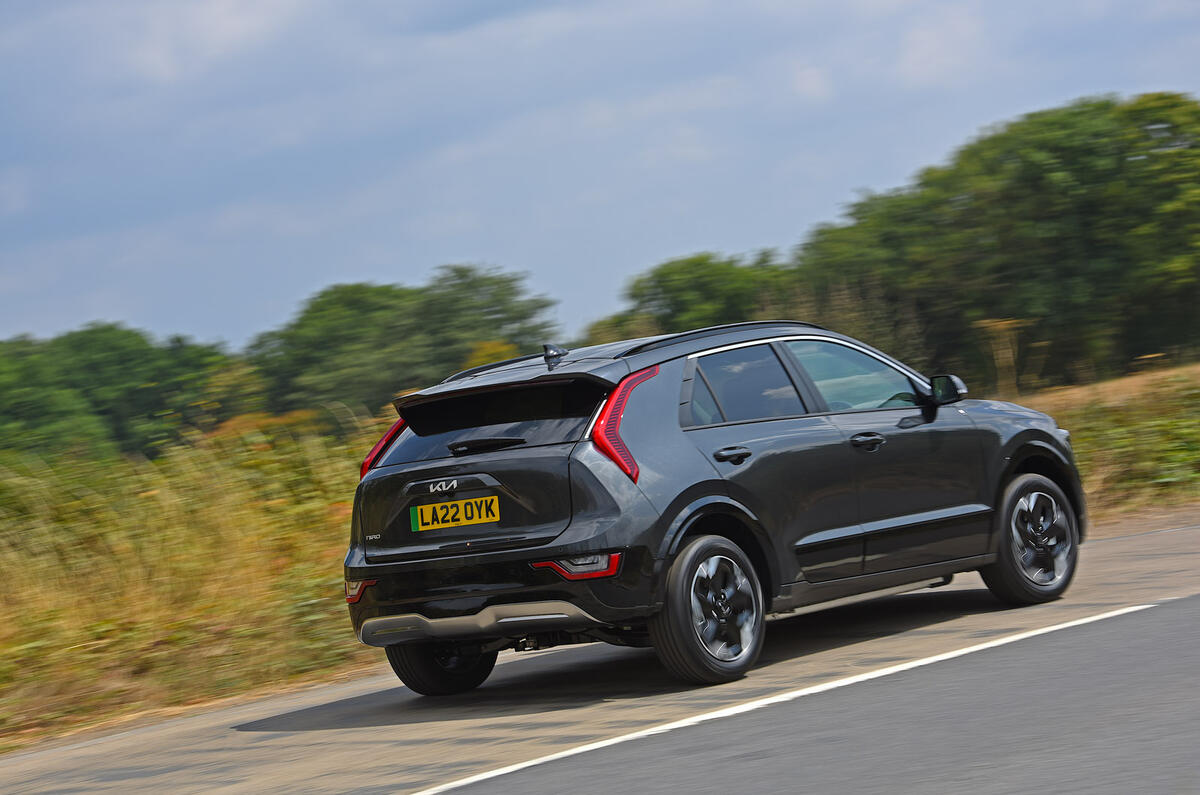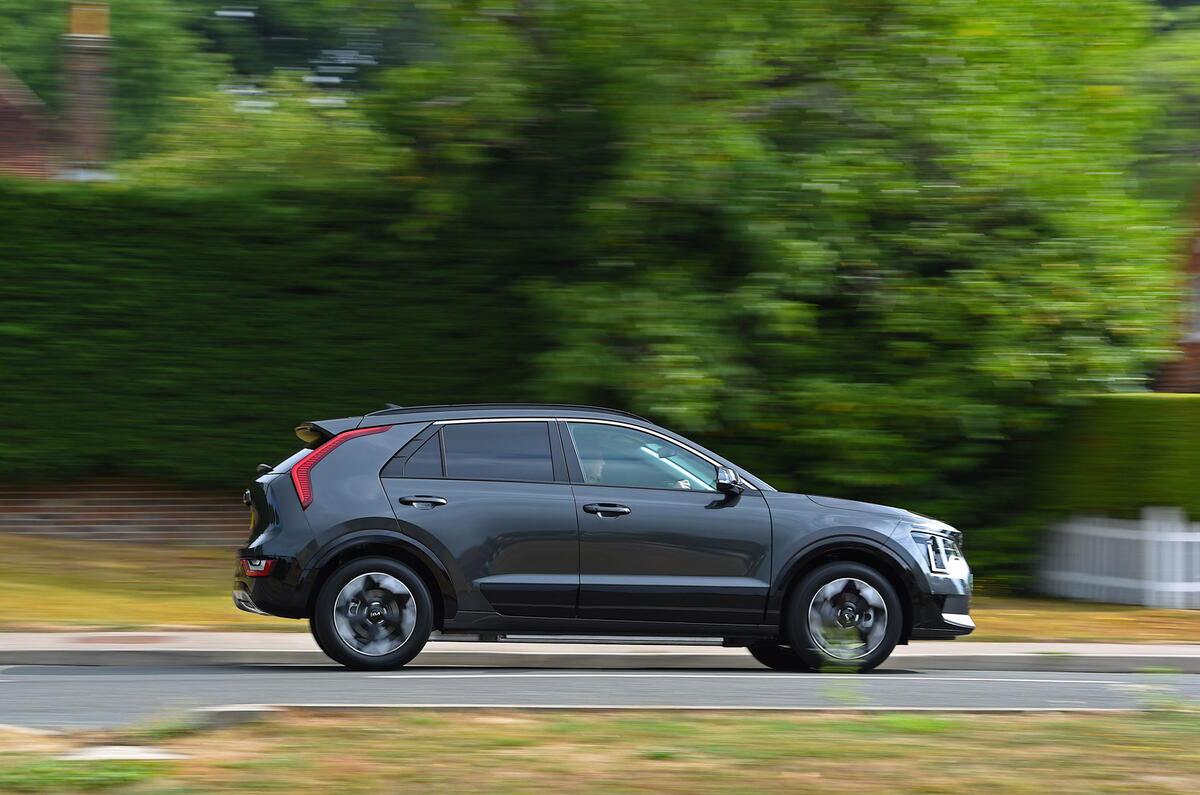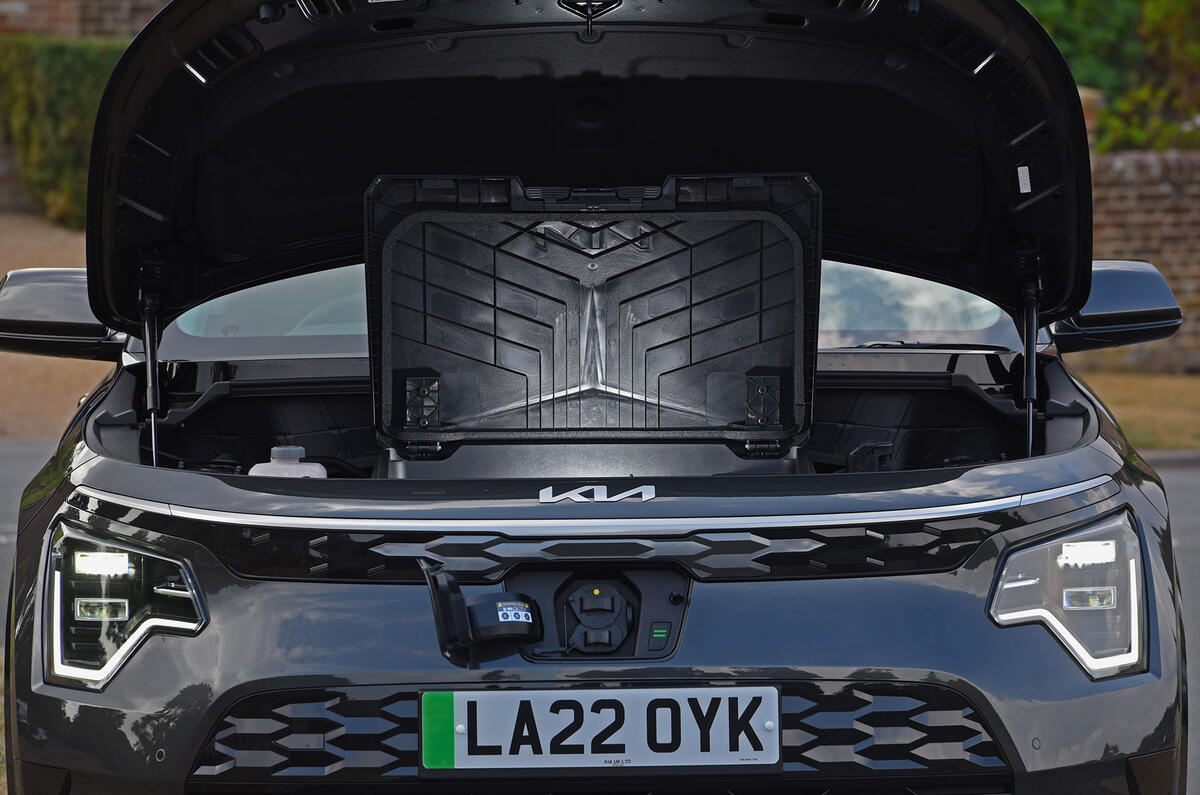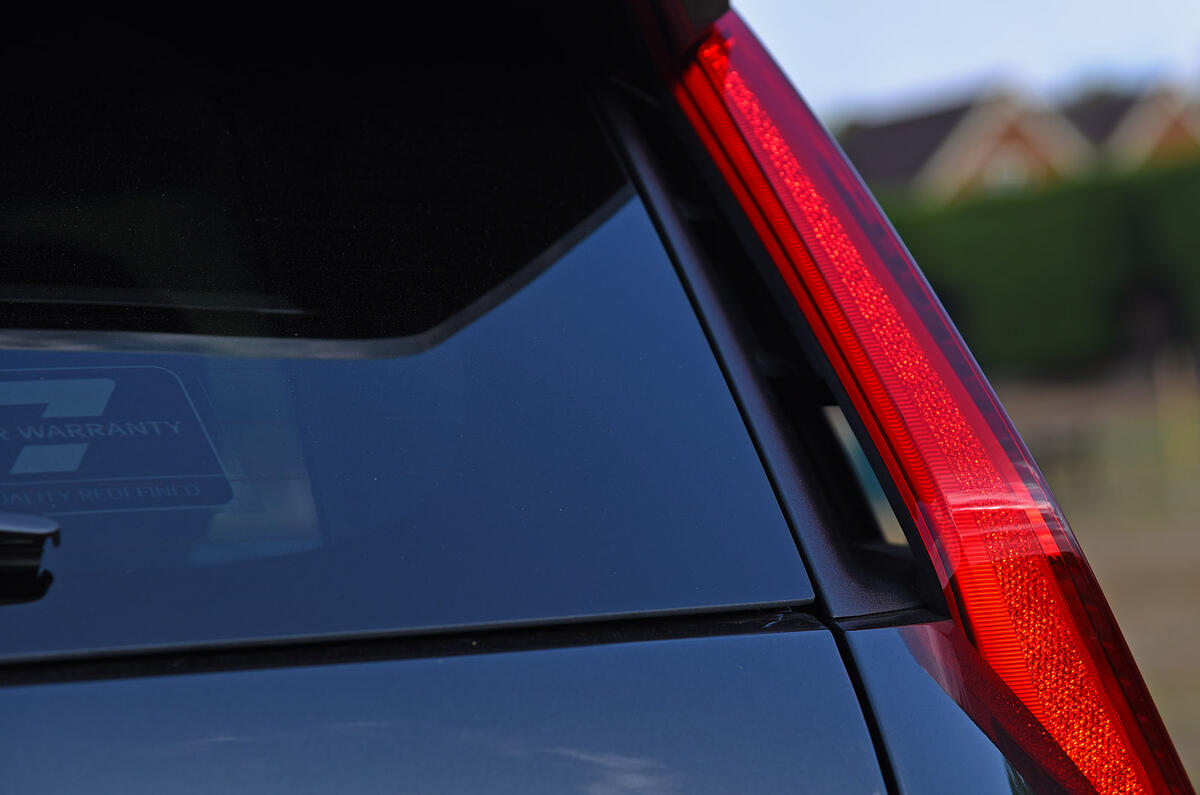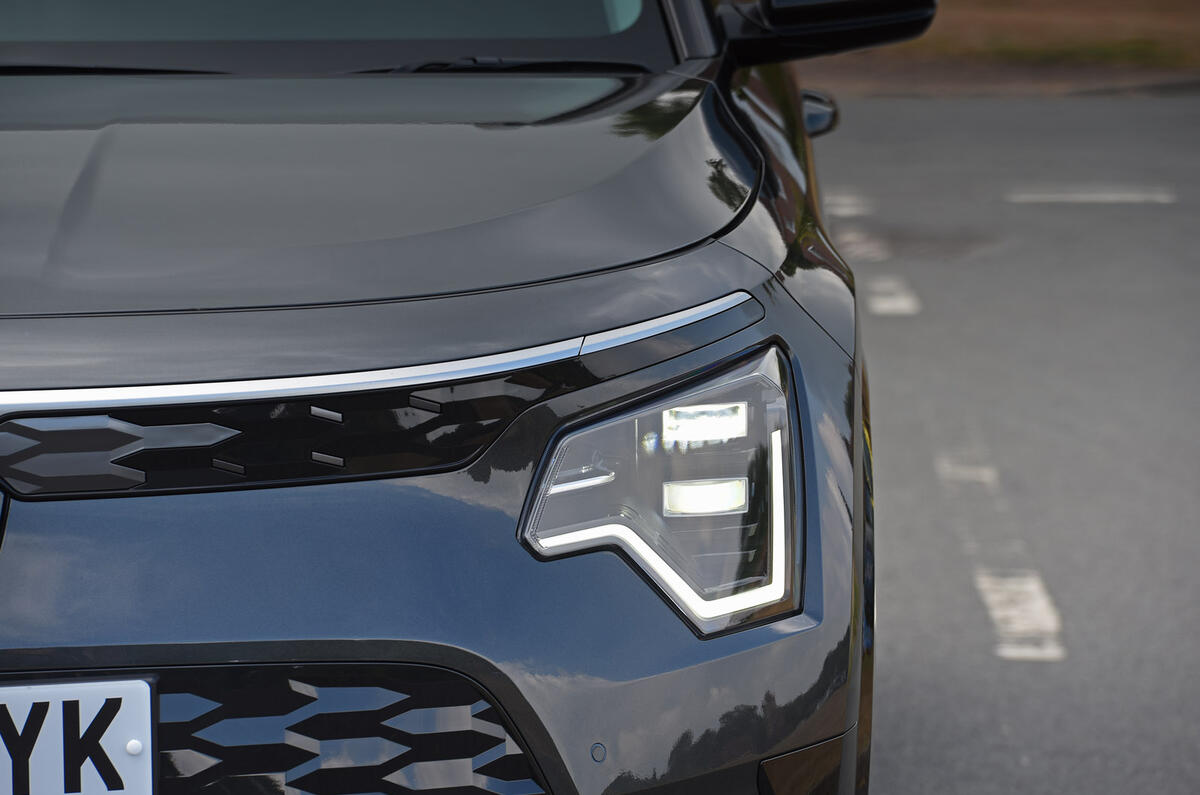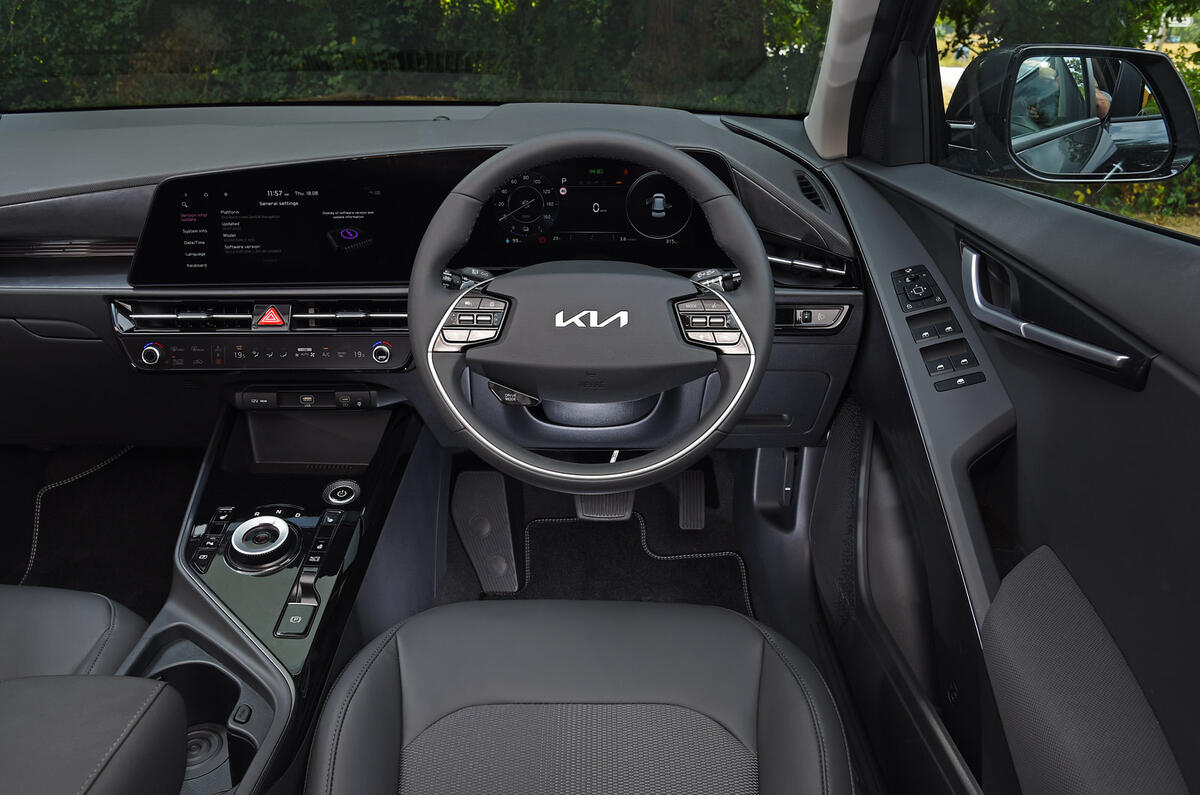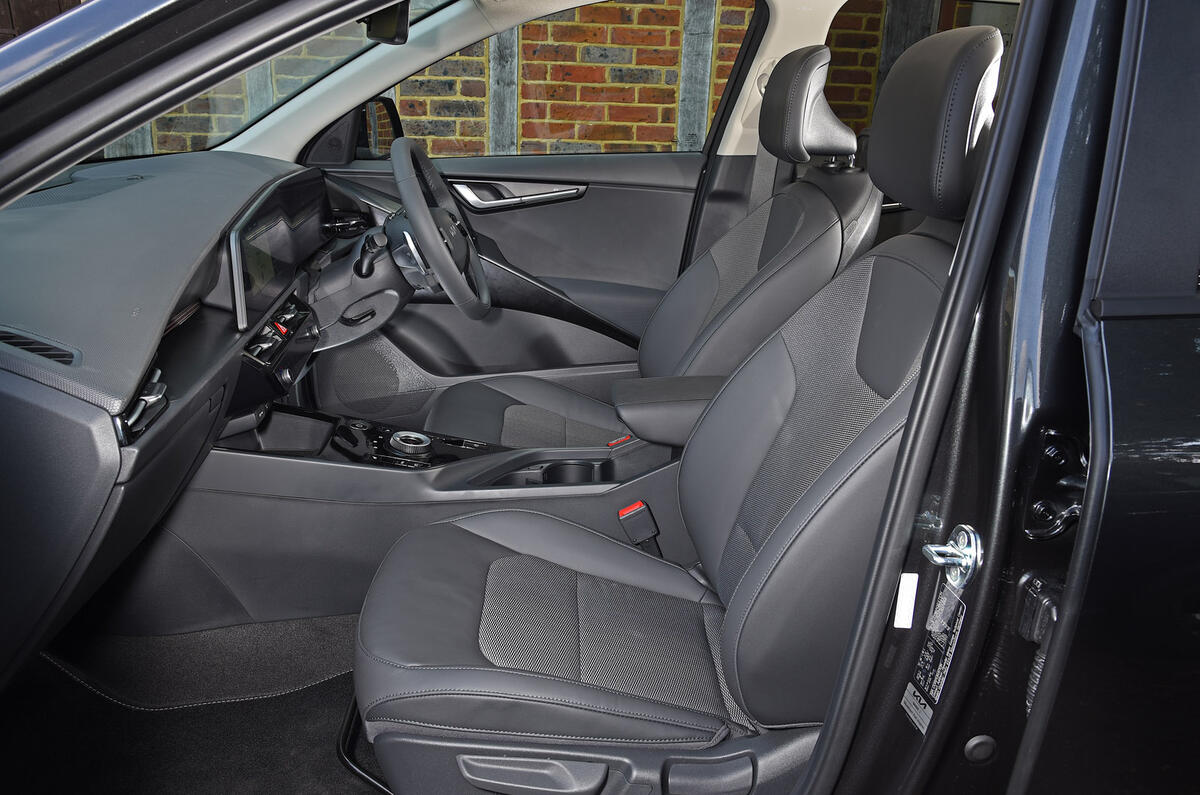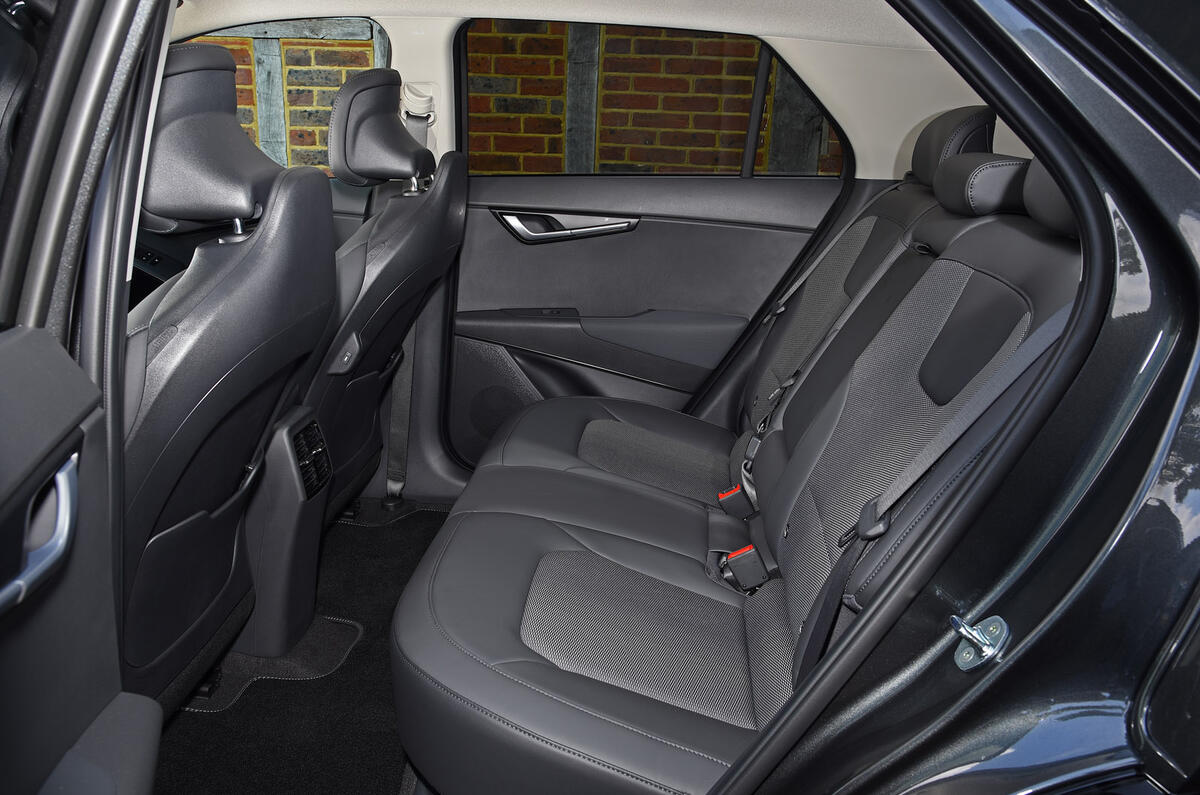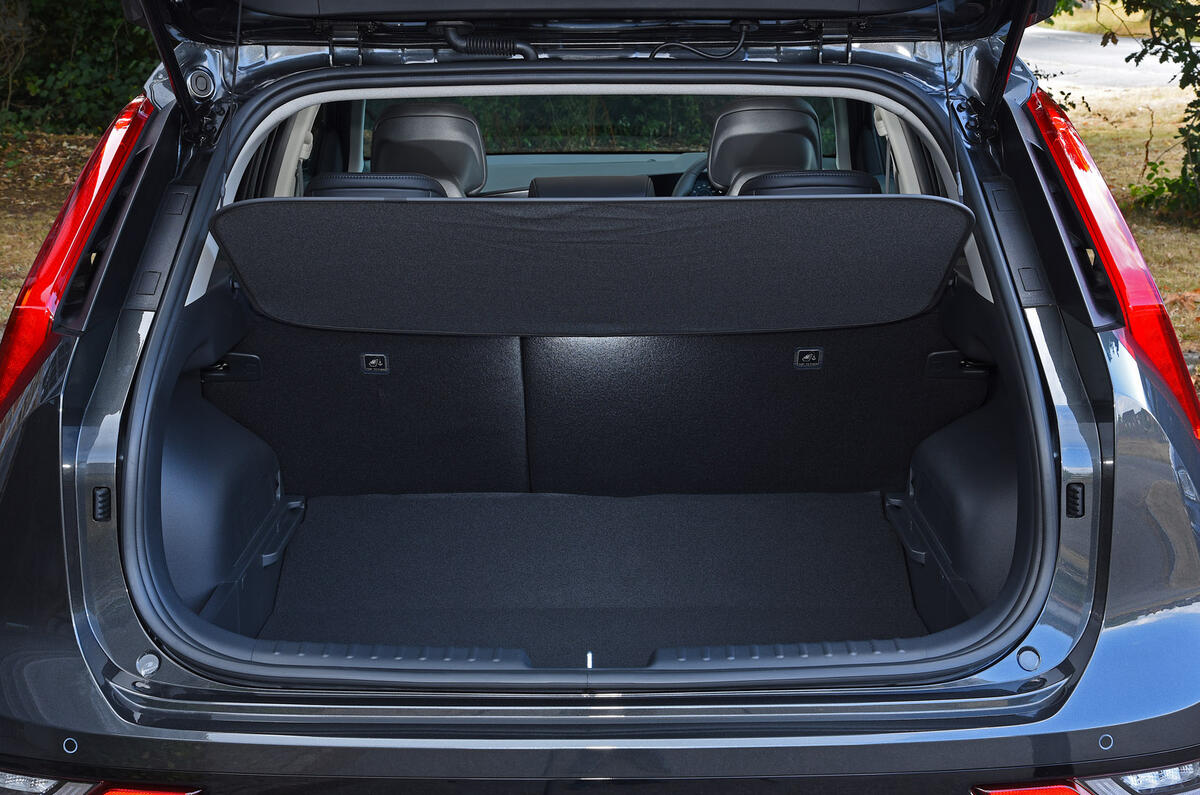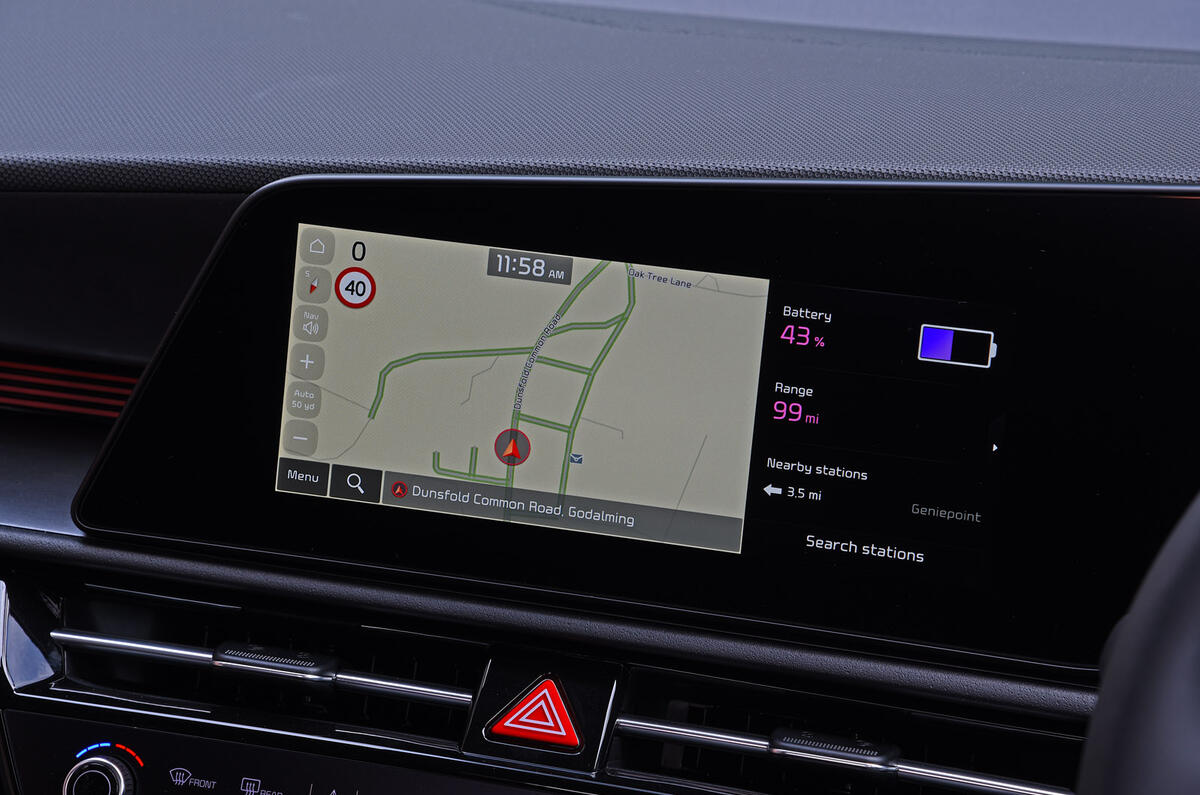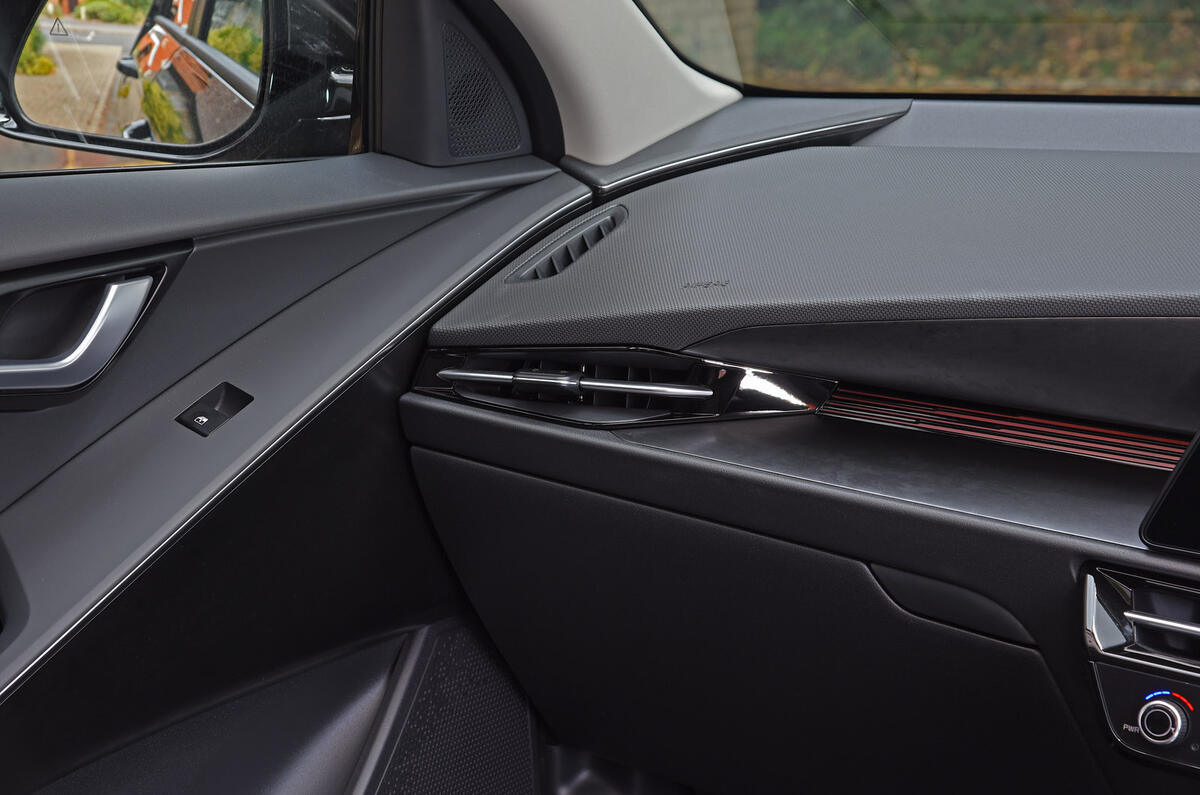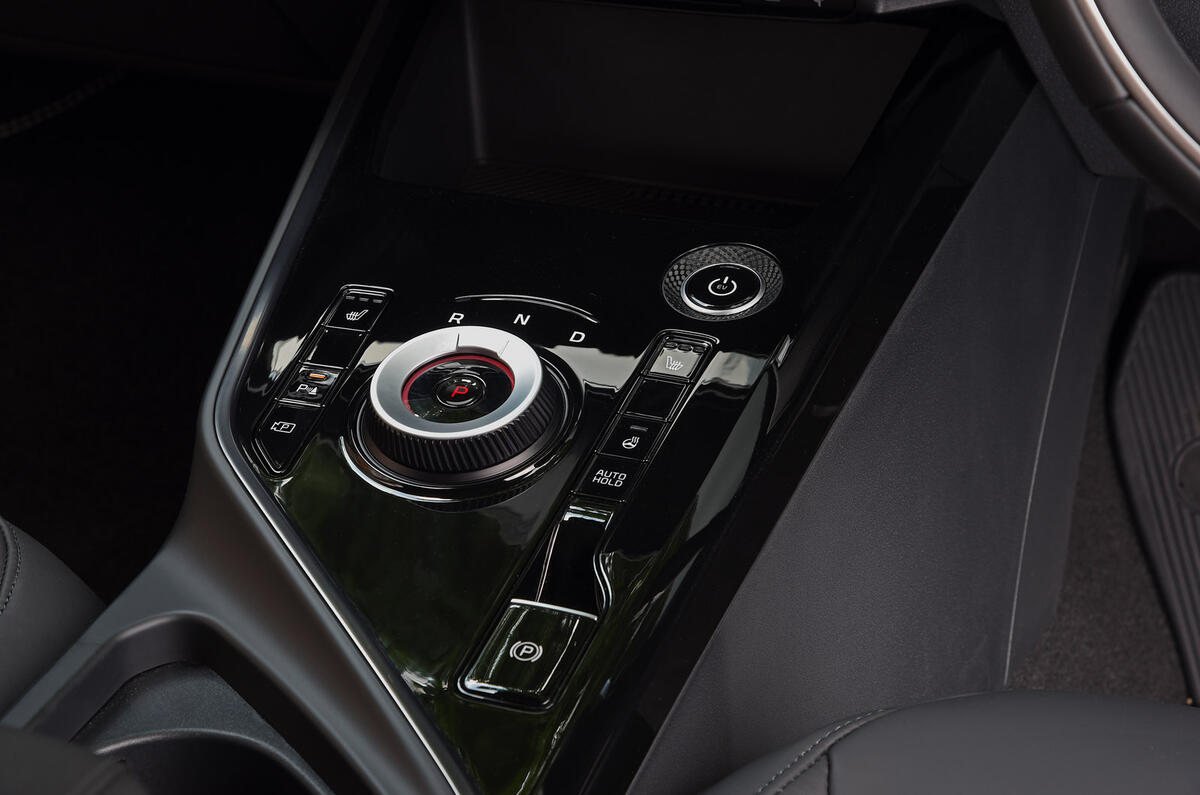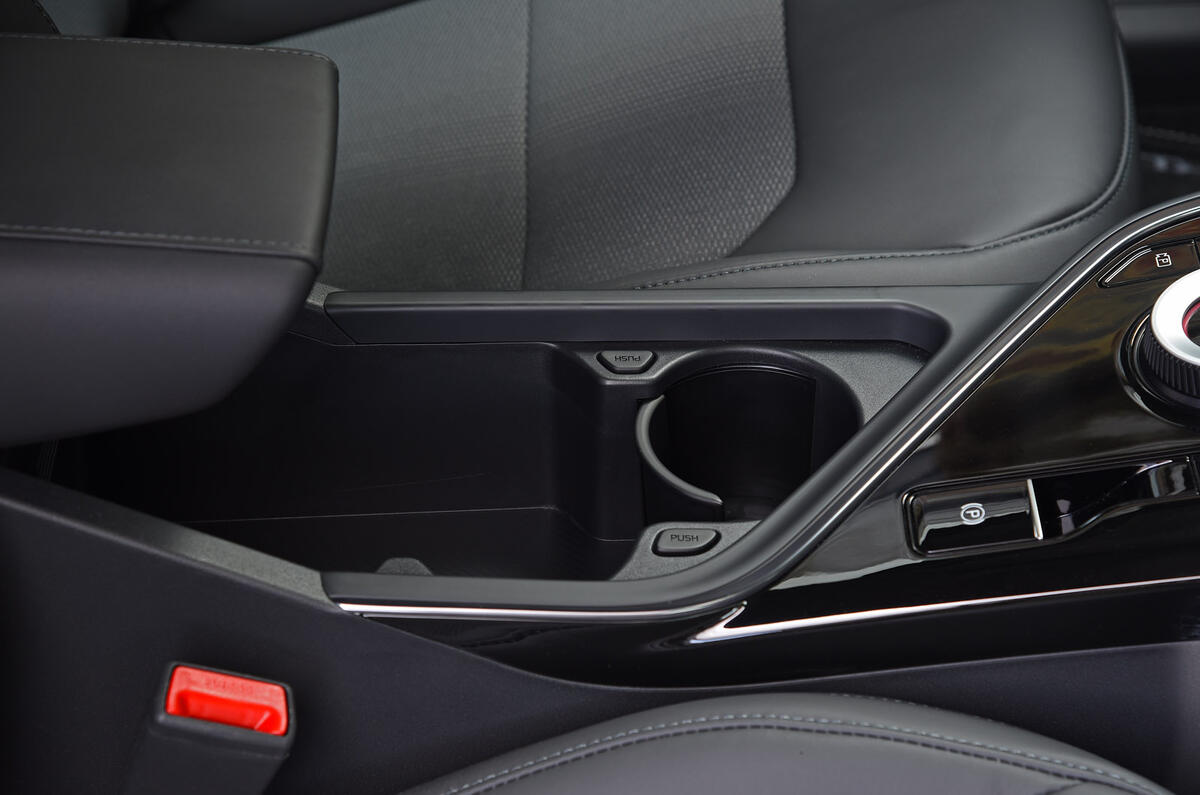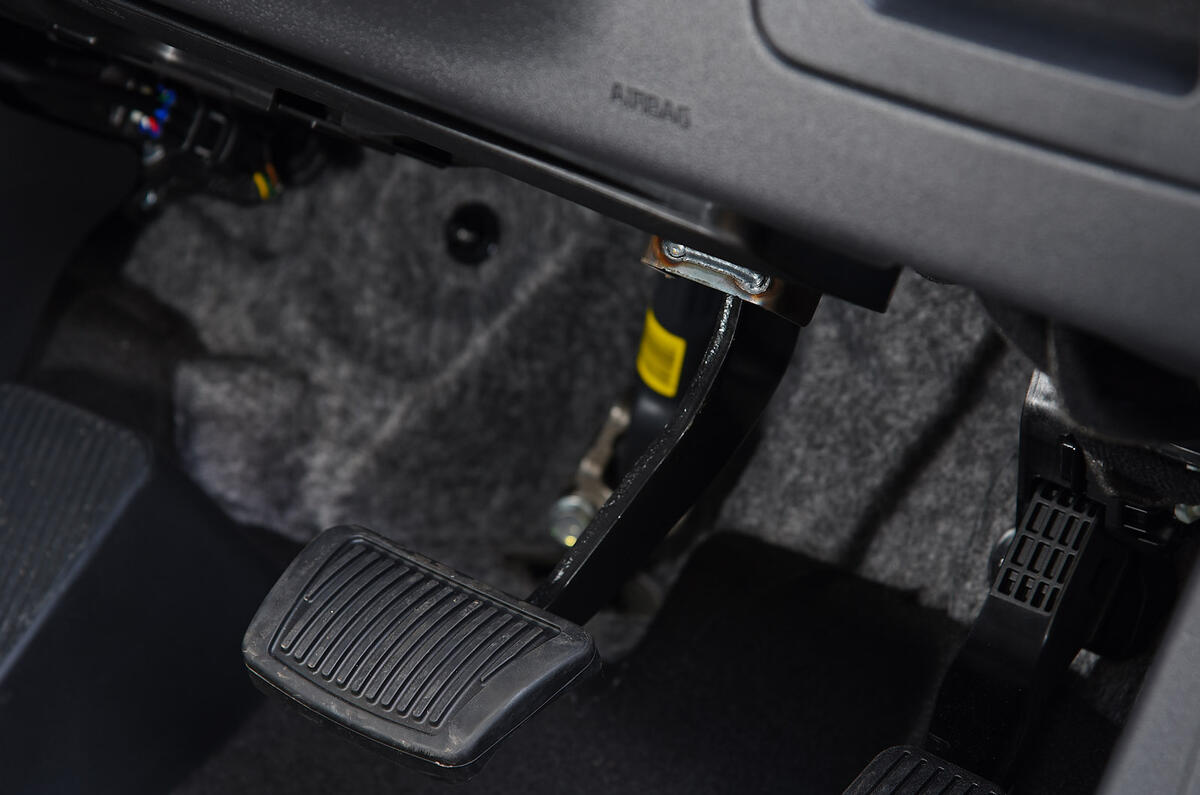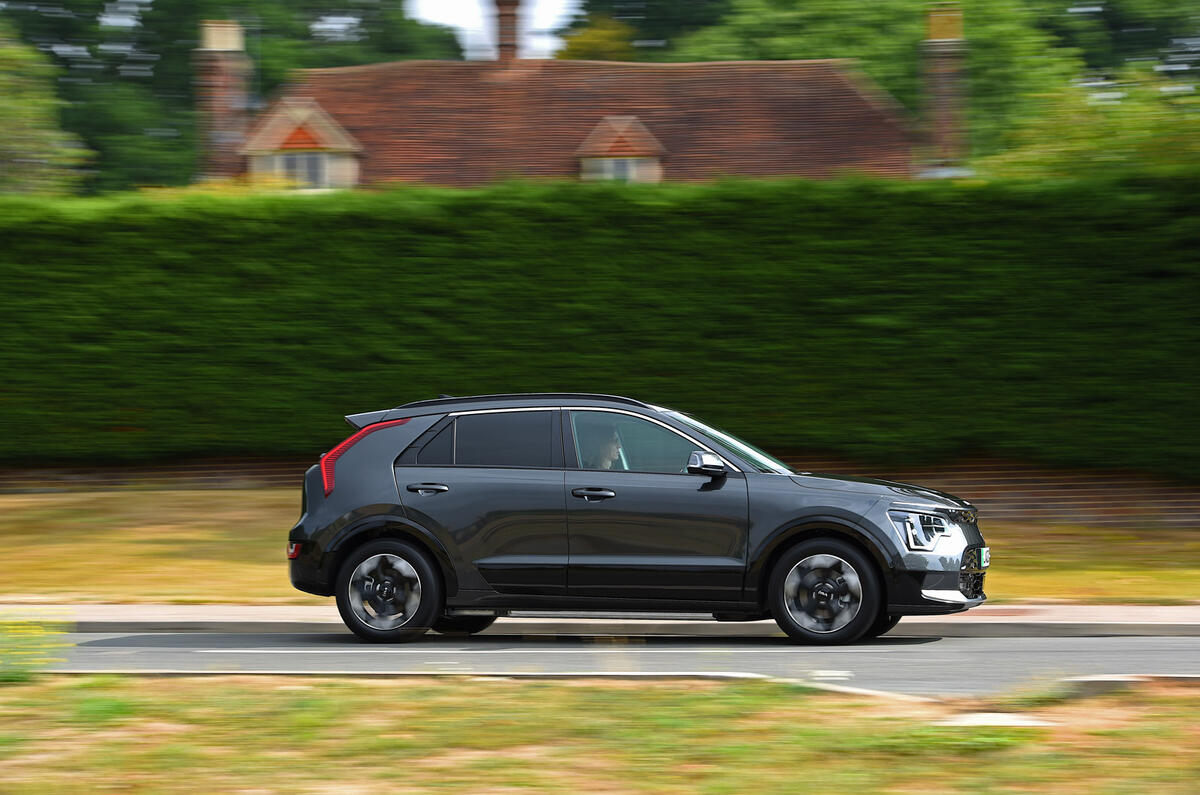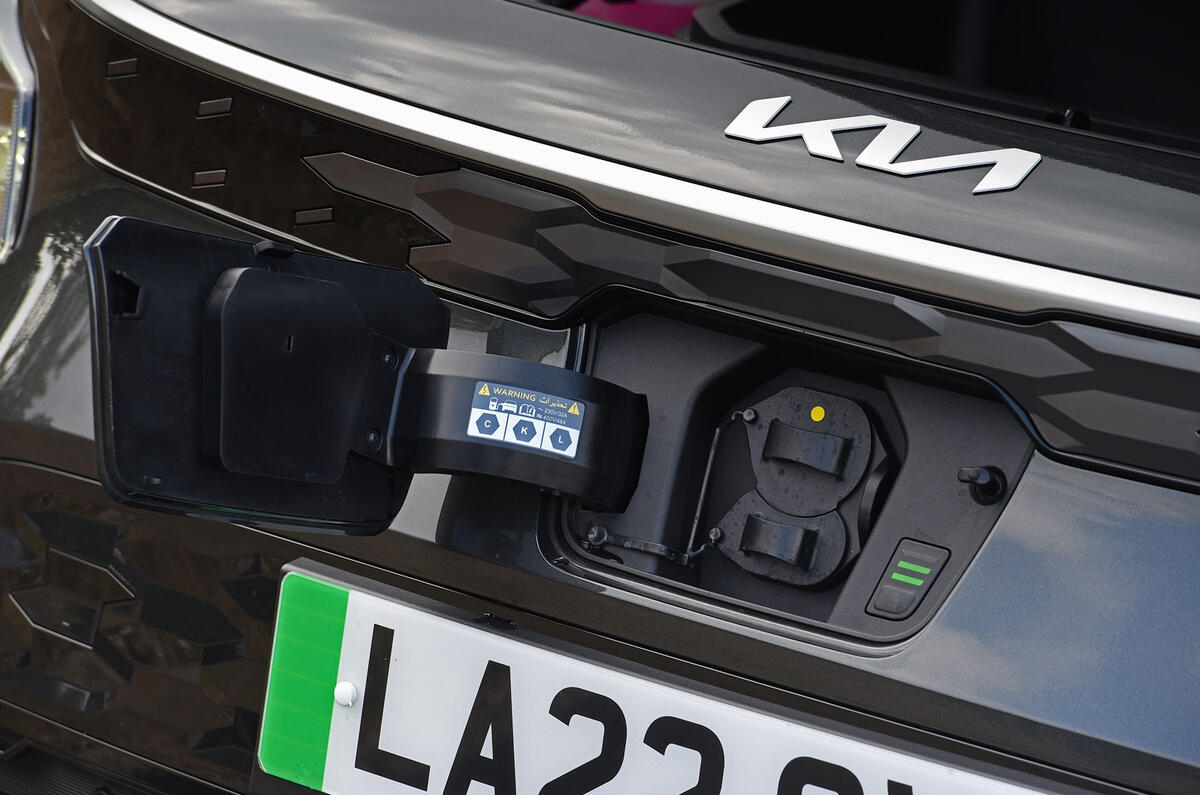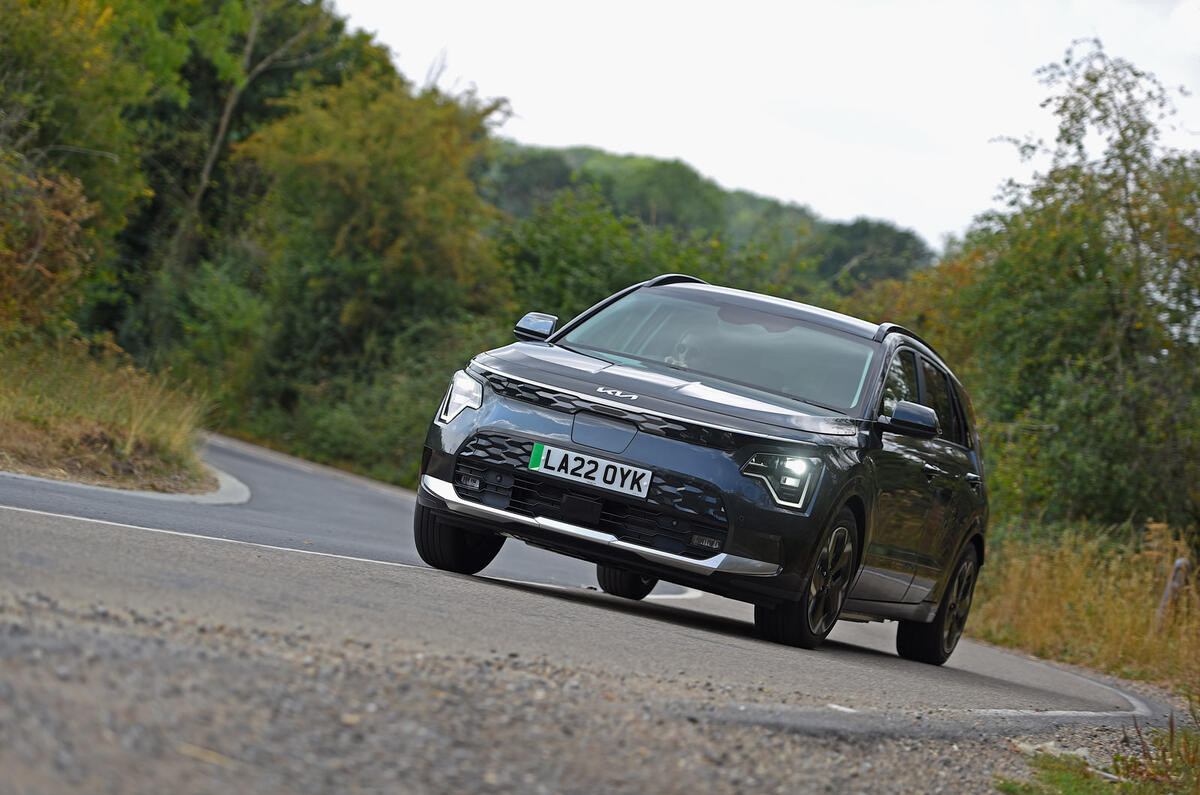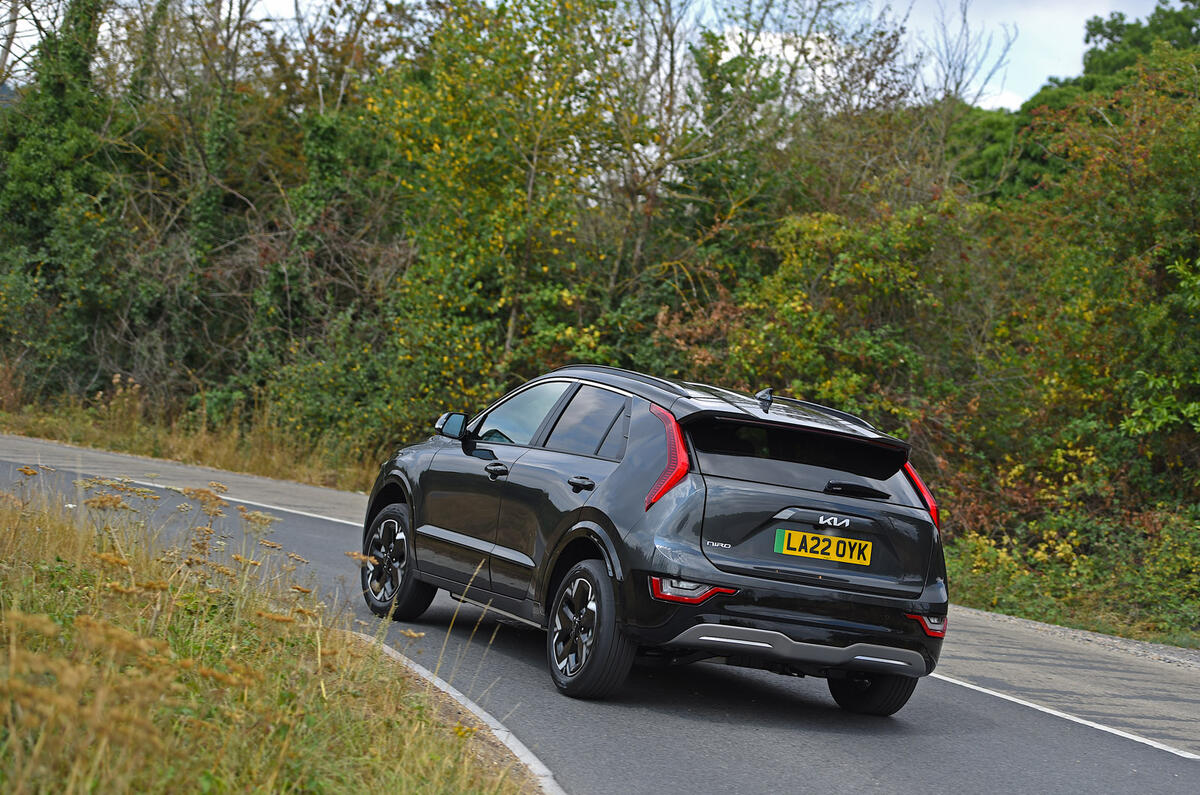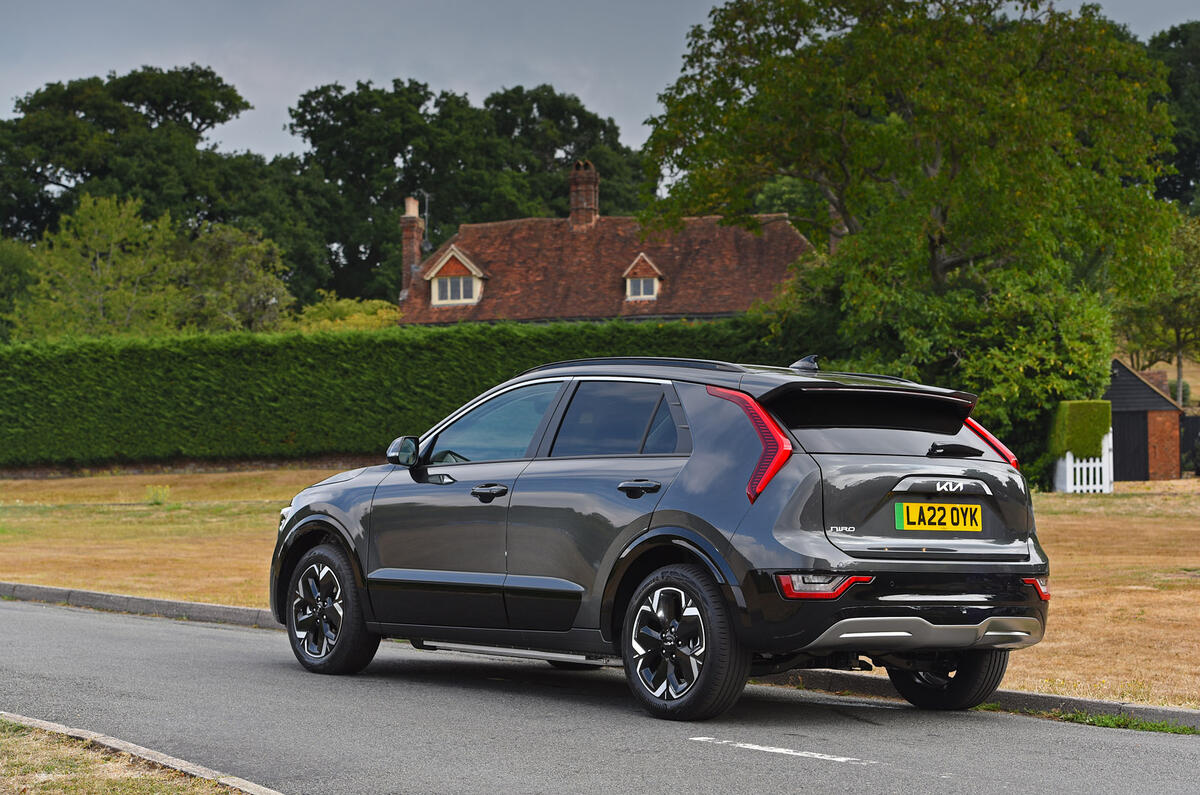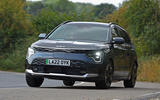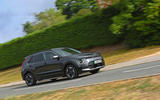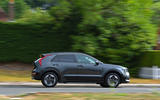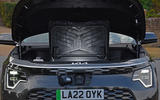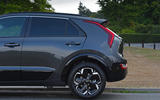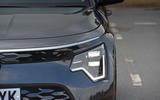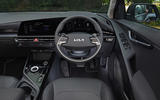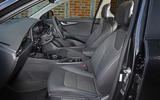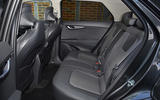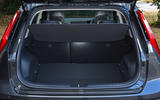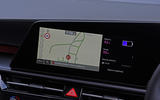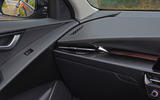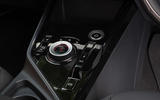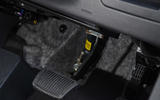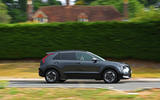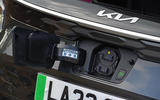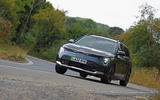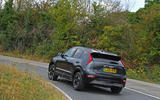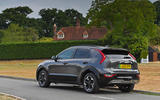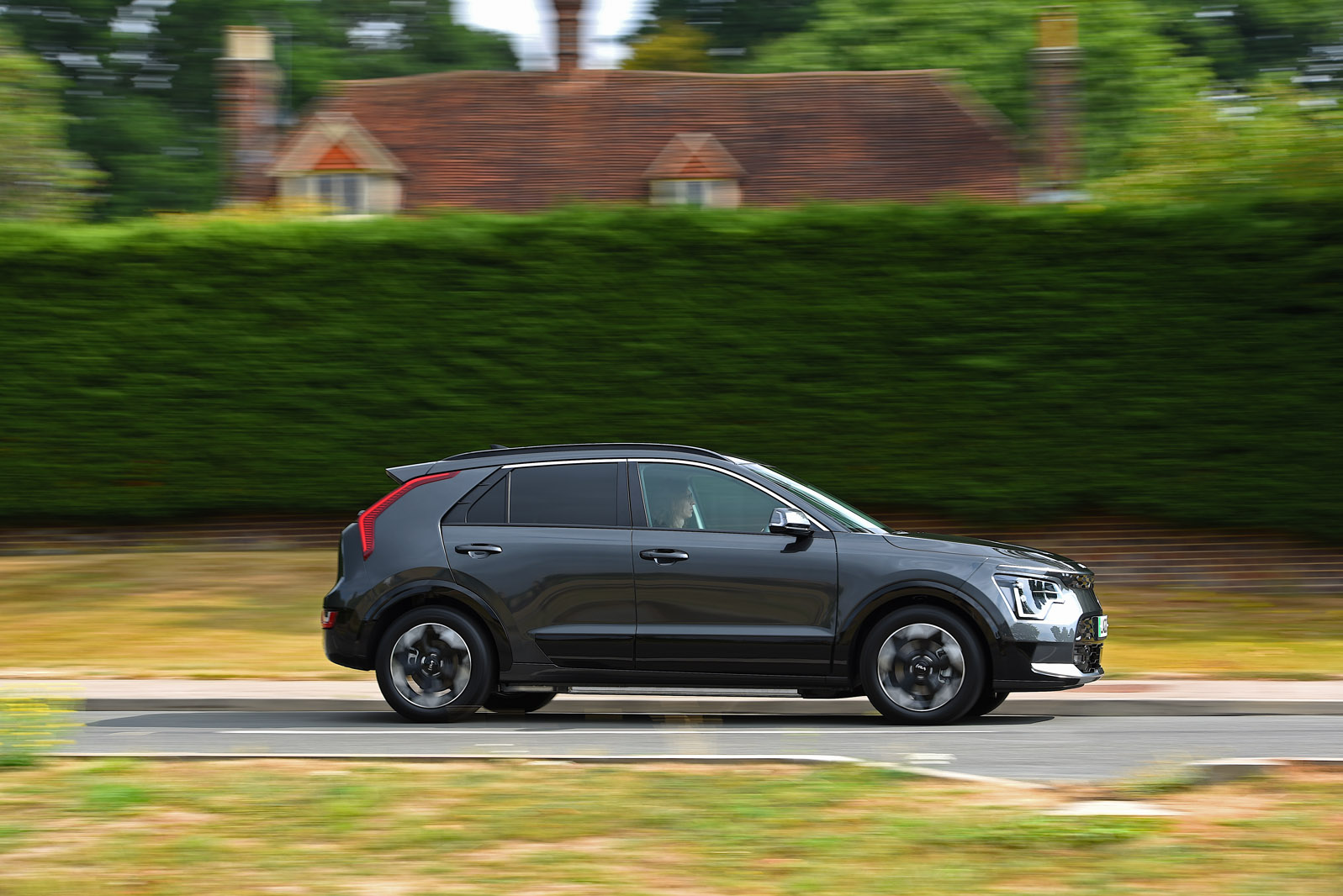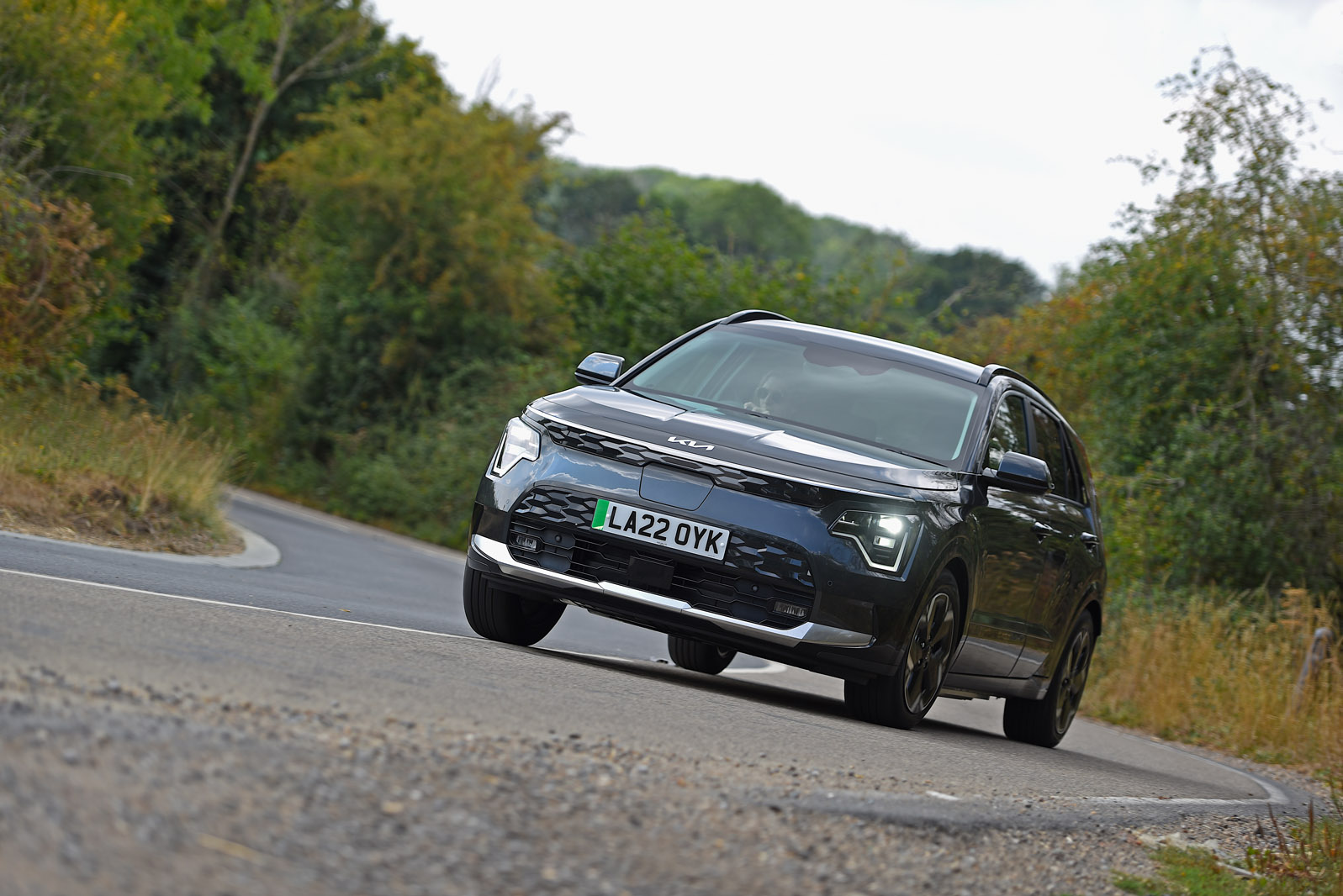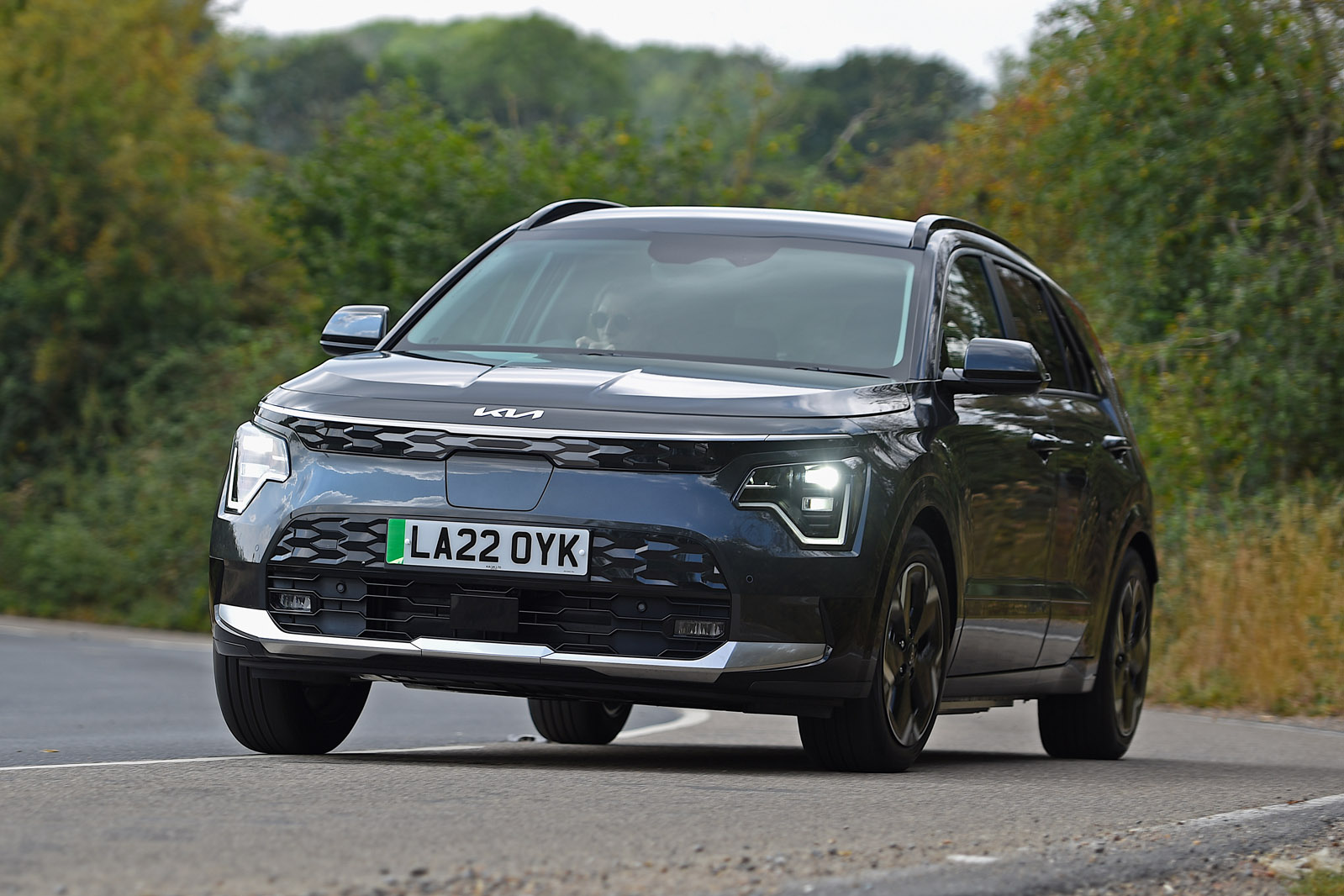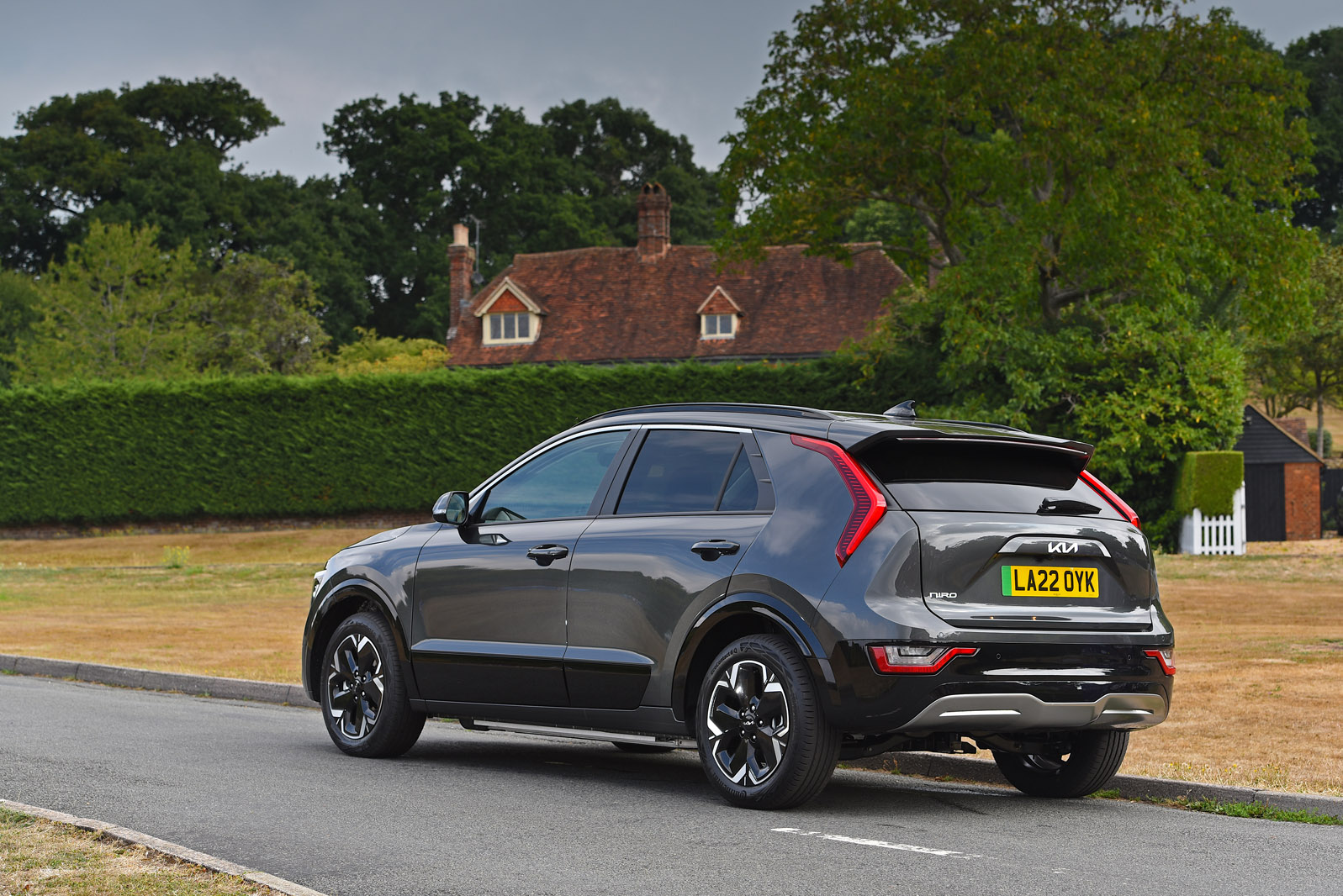The main thing that kept the Kia e-Niro from a five-star verdict in 2019 was an interior that looked better than it felt. The Korean brands have improved hugely in that area, as the Kia Niro EV shows.
Like the exterior, the interior styling takes inspiration from the swoopy Kia EV6 and Kia Sportage, with the curved screens and rising armrests on the doors creating a more cockpit-like feel than you might expect in a crossover hatchback.
Whether the materials stack up depends on which trim level you go for. Although the base 2 grade is quite well equipped on paper, Kia has de-contented it in a few significant ways that might have the effect of pushing buyers to 3 or 4 grade.
Where higher trim levels get soft-touch materials on the door cards, customisable mood lighting and trim panels that look like tarnished brass (even though they’re recycled plastic), 2 just gets plain hard plastic and a much smaller infotainment screen that looks a bit lost in its oversized plastic binnacle.
In 3 spec, though, the Niro is about on a par with the Cupra Born. The German Spaniard’s cabin has more scratchy plastics, but Kia’s vegan approximation of leather is very approximate indeed, feeling more like soft papier mâché.
The Niro also suffers from one or two unexpected quality issues. There’s a fair bit of ugly exposed wiring under the seats and in the driver’s footwell, the luggage cover is flimsy and the brake pedal is suspended from a crudely welded bracket that can catch parts of your shoe as you come off the brake.
Kia’s designers have carefully considered usability in other ways, though. There’s a decent selection of physical buttons dotted around the cabin, and while the switchable touch bar for the climate control and the multimedia shortcuts isn’t ideal, it’s far better than an all-screen solution.
The space on offer in the Niro is impressive, too. Thanks to fairly thin backs on the front seat, it has just as much rear leg room as the Born and the Volkswagen ID 3 but 90 litres more boot space, with additional storage under the floor and in the small frunk. The VW Group MEB-based cars are 10cm shorter, meaning they use their footprint more efficiently, but other than that, the Niro doesn’t seem to suffer too much from having to share its platform with ICE-powered cars.
The one area where the intrusion of the battery pack is noticeable is in the driving position, which is higher than in the Niro hybrids. A tall driving position is hardly a negative for a crossover or SUV, but if you adjust the steering column to suit, the wheel sits at more of an angle than in most modern cars and long-legged drivers might hit their knee against the column trim.
Infotainment
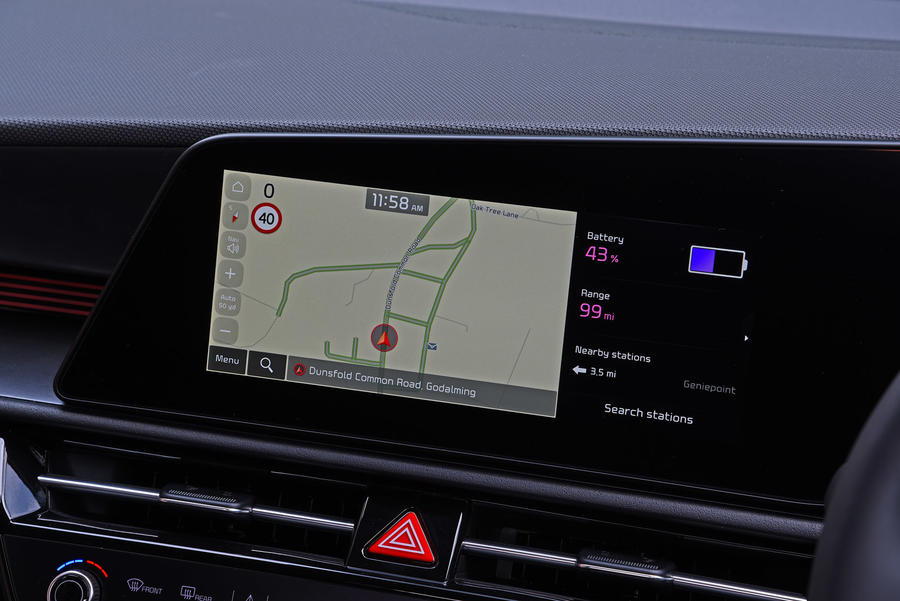
Kia offers two infotainment systems in the Niro: 2 grade has an 8.0in screen, while 3 and 4 upgrade to a higher-resolution 10.3in version with built-in navigation and more modern graphics. Android Auto and Apple CarPlay are standard across the range, but bizarrely only the cheaper system supports wireless CarPlay (although it can be buggy).
We spent most of our time in a 3 test car. The multimedia interface is familiar from other recent Kias, responds fairly quickly and is logical to navigate, partly thanks to the row of shortcut buttons on the touch bar that is shared with the climate controls. We’d always take usability over snazzy graphics, but it must be said that Kia’s style is starting to look a touch dated.
The built-in sat-nav works almost as well as Google Maps but has the added benefit that if you set a rapid charger as your destination, the car will precondition the battery for faster charging when you arrive.


